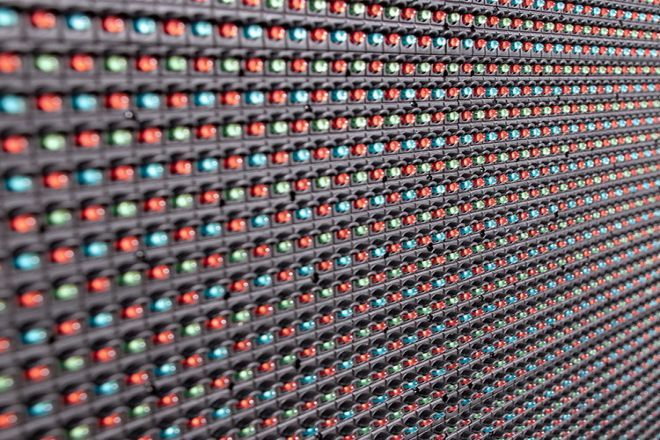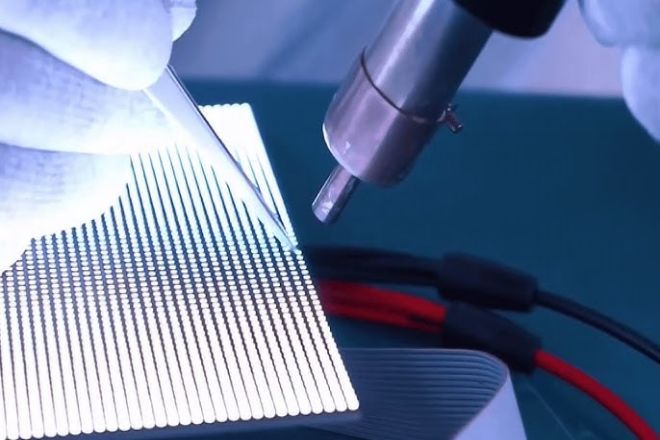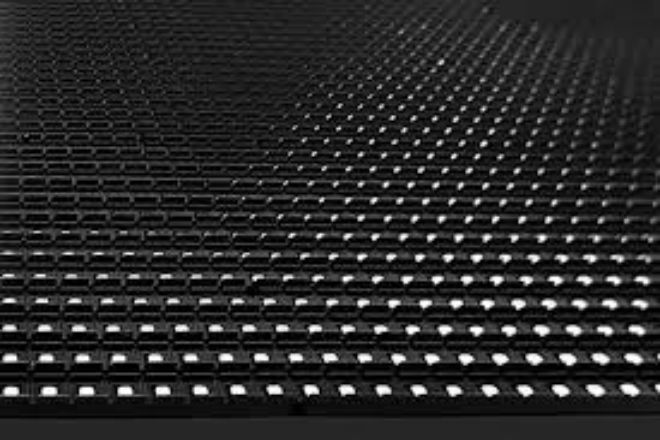序章

現代の都市景観では、LEDディスプレイは広告や情報表示の手段として好まれています。しかし、最高品質のものでも LEDディスプレイ ランプビーズが点灯しないなど、いくつかの小さな問題が必然的に発生します。
これは表示効果に影響を与えるだけでなく、情報の伝達を妨げる可能性もあります。 LED ディスプレイのユーザーとして、これらの問題を迅速に特定して解決する方法を知ることは非常に重要です。この記事ではその方法を説明します。
1. LEDディスプレイランプビーズが点灯しない理由を理解する
1) 電源 死んだ
期待を込めてテレビの電源を入れたら、画面が暗いことに気づいたと想像してください。このとき、まず電源を確認します。LED ディスプレイでも同じ状況が当てはまります。
電源は LED ディスプレイの生命線であり、ディスプレイが正常に動作するために必要な電力を供給します。電源が切れると、ディスプレイの他の部分がどれだけ完璧であっても、正常に動作しなくなります。
具体的には、プラグがソケットに完全に差し込まれておらず接触不良になっている、電源コードが長期間の使用により摩耗して内部の配線が露出または破損している、ヒューズが切れたり変圧器が損傷するなど、電源自体が故障するなど、さまざまな理由で電源が切れることがあります。
これらのいずれかの状況では、LED ディスプレイに十分な電力が供給されず、ランプビーズが点灯しなくなる可能性があります。
2) 信号が送信されない
LED ディスプレイがカラフルなコンテンツを表示できるのは、外部からの信号を受信して分析できるためです。
これらの信号は、特定の通信プロトコルとインターフェースを介してディスプレイの制御システムに送信され、制御システムは信号をランプビーズの光と色の変化に変換します。
ただし、信号線の緩み、断線、干渉など伝送中に信号に問題があったり、ソフトウェアのクラッシュ、ハードウェアの損傷など制御システム自体に障害が発生した場合、信号がディスプレイに正しく伝送されない可能性があります。
これにより、ディスプレイは信号に応じて正しく表示できず、ランプビーズが点灯しなかったり、異常な表示をしたりする可能性があります。
3) ランプビーズが自然に壊れる
LEDランプビーズはディスプレイの基本コンポーネントであり、光を発して画像を形成する役割を果たします。しかし、家庭の電球と同様に、LEDランプビーズにも寿命があります。使用時間が長くなるにつれて、ランプビーズ内の発光材料は徐々に劣化し、発光効率が低下します。
さらに、製造または設置の過程でランプビーズに欠陥があったり、使用中に外部からの衝撃、振動、その他の悪影響の影響を受けたりすると、ランプビーズが損傷する可能性もあります。
ランプビーズが損傷すると、光を発することができなくなり、ディスプレイ上に黒い点や暗い領域が形成されます。
4). コントロールカード「ストライク」
コントロール カードは LED ディスプレイの「頭脳」です。外部信号を受信し、信号の内容を分析し、信号指示に従ってディスプレイ上のランプ ビーズを点灯したり色を変えたりするように制御します。
ハードウェア コンポーネントの損傷、ソフトウェア プログラムのエラー、通信インターフェイスの障害などにより、制御カードに障害が発生すると、制御カードは正常に動作しなくなります。この場合、制御カードは外部信号をディスプレイが理解できる命令に変換できず、ランプ ビーズを制御して正しく表示できなくなります。
軍隊が指揮官を失ったのと同じように、ディスプレイ上のランプビーズも迷子になり、点灯しなくなったり、混乱した表示になったりすることがあります。
5). 熱すぎると、ランプビーズが「点火」します。
LED ディスプレイは動作中に一定量の熱を発生します。ディスプレイの放熱システムが適切に設計されていないか故障している場合、熱は時間内に放散されず、ディスプレイ内部に蓄積されます。
温度が一定の限度を超えると、ディスプレイのハードウェア、特にランプビーズなどの温度に敏感なコンポーネントが損傷する原因になります。
高温により、ランプビーズ内の発光材料の劣化が早まり、性能が低下したり、故障したりします。さらに、高温により、ランプビーズと他のコンポーネント間の接続不良やショートなどの問題が発生することもあります。
そのため、ディスプレイ画面の放熱性が悪く、温度が高すぎると、ランプビーズが過熱により「点火」し、光が放射されなくなる可能性があります。
このような状況を回避するには、ディスプレイ画面の冷却システムが適切に機能し、効果的に熱を放散できるように、定期的にチェックしてメンテナンスする必要があります。
2. ランプビーズの予備検査手順(点灯ではない)

LED ディスプレイ画面のランプビーズが点灯しない場合の予備検査手順も、比較的直感的で、専門家以外の人でも簡単に操作できます。以下は、ユーザーが予備検査を実施するための詳細な手順です。
1). 電源コードが正しく接続されているか、電源が正常かどうかを確認します。
ステップの説明:
電源プラグを確認してください: まず、ディスプレイ画面の電源プラグが電源ソケットにしっかりと差し込まれているかどうかを確認します。プラグが緩んでいないか、底まで差し込まれていないかを確認してください。
電源コードを確認してください: 電源コードをチェックして、明らかな損傷、ひび割れ、露出した配線がないか確認してください。これらの問題が見つかった場合は、電源コードをすぐに交換する必要があります。
電源をテストします。 電圧計またはインジケータ ライト付きの電化製品 (卓上ランプなど) を使用して、電源ソケットに電力が供給されているかどうかをテストします。ソケットに電力が供給されていない場合は、回路の故障または停電の可能性があります。回路をさらに確認するか、電力が回復するまで待つ必要があります。
ディスプレイの電源インジケータライトを確認します。 ディスプレイに電源表示ランプがある場合は、点灯するかどうかを確認してください。点灯しない場合は、ディスプレイの電源部分に問題がある可能性があります。
2). 信号線が緩んでいたり損傷していないか確認する
ステップの説明:
信号線の接続を確認してください: 信号線がディスプレイと制御装置(コンピュータ、コントローラなど)のインターフェースにしっかりと接続されているかどうかを確認します。緩んでいないか、しっかりと差し込まれていないかを確認します。
信号ラインのステータスを確認します。 信号線が損傷、破損、ねじれていないかどうかを注意深く観察します。信号線に異常がある場合は、信号伝送の問題の原因である可能性があります。
信号ラインテストを交換します。 信号線に問題があると思われる場合は、既知の信号線を交換してテストすることができます。交換後に問題が解決した場合は、元の信号線に問題があることを意味します。
3). コントロールカードが正常に動作しているかどうかを確認する
ステップの説明:
コントロール カードのインジケータ ライトを確認します。 制御カードにインジケータランプ(動作インジケータランプ、故障インジケータランプなど)がある場合は、正常な状態で点滅または点灯するかどうかを観察します。インジケータランプが異常な場合は、制御カードに障害がある可能性があります。
コントロール カードの接続を確認します。 コントロール カードとディスプレイ、電源、その他の関連機器間の接続がしっかりしていて信頼できるかどうかを確認します。接続ケーブルがしっかりと差し込まれており、損傷がないことを確認します。
コントロール カードを再起動します。 制御カードまたは制御システムを再起動して、問題が解決するかどうかを確認してください。場合によっては、単純な再起動操作で制御カードの通常の動作状態を復元できることがあります。
制御ソフトウェアを確認します: 制御カードがコンピューターまたはその他のデバイスによって制御されている場合は、制御ソフトウェアが正しく実行されているかどうかを確認し、ソフトウェアのバージョンが制御カードと互換性があることを確認します。
3. LEDディスプレイランプビーズが点灯しない場合の簡単な修理方法
1). 電源を確認する
手順:
まず、コンセントに電気が来ていることを確認します。他の電化製品を差し込んでみて、コンセントが正常に機能しているかどうかを確認してください。
次に、ディスプレイの電源コードがしっかりと差し込まれており、緩んでいたり破損したりしていないかどうかを確認します。
ディスプレイに電源アダプター(通常は「レンガ」の形をした物)がある場合は、プラグを抜いて数秒待ってから再度差し込んで、問題が解決するかどうかを確認してください。
2). コントロールカードと信号ケーブルを再接続します
手順:
安全を確保するためにディスプレイの電源をオフにしてください。
ディスプレイに接続されているコントロール カードと信号ケーブルを見つけます。これらは通常、ディスプレイの背面または側面にあります。
コントロール カードと信号ケーブルを慎重に取り外し、コネクタが清潔で、ほこりや酸化物がないかどうかを確認します。ほこりや酸化物がある場合は、清潔な布で軽く拭いてください。
次に、コントロール カードと信号ケーブルを所定の位置に戻し、しっかりと差し込まれ、しっかりと接続されていることを確認します。
3). ディスプレイの明るさを調整する
手順:
ディスプレイに明るさ調整用のボタンまたはノブがある場合は、それを調整してランプビーズが点灯するかどうかを確認できます。
ディスプレイがコンピューターまたは他のデバイスによって制御されている場合は、制御ソフトウェアに入り、明るさ設定オプションを見つけて、明るさの値を上げてみてください。
注記:
感電やデバイスの損傷を防ぐため、作業を行う前に必ずディスプレイの電源がオフになっていることを確認してください。
操作方法がわからない場合や、デバイスを損傷するのではないかと心配な場合は、専門のメンテナンス担当者に連絡してサポートを受けることをお勧めします。
場合によっては、特定の領域または複数のランプビーズが破損しているために、ディスプレイのランプビーズが点灯しないことがあります。この場合、ランプビーズまたはディスプレイモジュール全体を交換する必要があります。これは通常、ユーザーが自分で解決できる問題ではなく、専門家による処理が必要です。
4. 注意事項と日常のメンテナンス

LED ディスプレイ ランプ ビーズが点灯しないという問題を防ぎ、良好な表示効果を維持するために、次のような注意事項と日常のメンテナンスの提案があります。
1). 注意事項
- 電源と信号線を定期的に点検する
電源プラグとソケットの接続がしっかりしているか、電源コードが損傷または老朽化していないかを定期的に確認してください。
マルチメーターなどのツールを使用して、電源電圧と電流が安定しているかどうかを確認し、正常な電源供給を確保します。
信号線の接続が緩みや破損がなくしっかりと固定されているかどうかを確認し、信号線コネクタは酸化や汚れによる信号伝送への影響を避けるために清潔に保つ必要があります。
- 高品質のアクセサリーを選ぶ
LED ディスプレイ スクリーンを購入するときは、ディスプレイ スクリーン自体とその付属品 (電源、制御カード、信号線など) の品質を確保するために、よく知られているブランドと信頼性の高い製品を選択する必要があります。
- 合理的なレイアウトと設置
LED ディスプレイ スクリーンを設置するときは、動作環境と放熱条件を考慮して、湿気や外部からの衝撃を受けやすい高温多湿の場所への設置を避ける必要があります。
過熱による熱の蓄積やランプビーズの損傷を防ぐために、ディスプレイ画面の周囲に放熱のための十分なスペースがあることを確認してください。
- 使用仕様に従ってください。
LED ディスプレイ スクリーンを使用する場合は、過度の使用や不適切な使用による機器の損傷を避けるため、製品マニュアルの使用仕様と操作ガイドラインに従う必要があります。
2). 日常のメンテナンスの提案
- ディスプレイを清潔に保つ
柔らかい布または専用のクリーニング ツールを使用して、定期的にディスプレイの表面を軽く拭き、ほこりや汚れを取り除いてください。化学クリーナーや鋭利なものを使用して画面を傷つけないようにしてください。
感電や機器の損傷を防ぐため、清掃中は必ず電源をオフにし、手を乾かしてください。
- 良好な放熱性を維持します。
冷却ファンやヒートシンクなどのコンポーネントの動作や清潔さなど、ディスプレイの冷却システムが正常に動作しているかどうかを定期的に確認してください。
放熱穴やヒートシンクのほこりやゴミを掃除して、放熱を良くしてください。高温環境で使用する場合は、エアコンやファンなどの補助放熱装置の使用を検討してください。
- 正しい電源オン/オフ手順に従ってください。
電源のオン/オフは、正しい順序と操作手順に従ってください。一般的には、まず制御コンピュータまたはその他の制御装置の電源を入れ、正常に動作してから LED ディスプレイをオンにする必要があります。電源をオフにする場合は、その逆になります。まずディスプレイをオフにし、次に制御装置をオフにします。
ディスプレイへの衝撃や損傷を避けるため、頻繁な電源のオン/オフや突然の停電は避けてください。
- 定期的な点検とメンテナンス
電源、信号線、制御カード、ランプビーズなどのコンポーネントの整合性と安定性を含め、LED ディスプレイ画面の包括的な検査とメンテナンスを定期的に実行します。
問題が拡大して機器の損傷を引き起こしたり、使用効果に影響を与えたりするのを避けるために、潜在的な問題をタイムリーに発見して対処します。
- 重要なデータをバックアップする
重要な LED ディスプレイ画面データと設定情報は、偶発的な損失を防ぐために定期的にバックアップする必要があります。これにより、機器の故障やデータの破損時に、データと設定情報を迅速に復元できます。
結論
LED ディスプレイのメンテナンスとトラブルシューティングは、慎重さと忍耐を必要とする作業です。この記事のガイダンスを通じて、基本的なトラブルシューティング スキルを習得し、ランプ ビーズが点灯しない問題を迅速に特定して解決できるようになることを願っています。
定期的な検査とメンテナンスは、ディスプレイ画面の長期的かつ安定した動作を確保するための鍵であることを忘れないでください。自己検査と修理の過程で困難に直面したり、複雑な技術的問題に遭遇したりした場合は、遠慮なく専門の技術サポート チームにご連絡ください。
最後に、LEDディスプレイについてもっと知りたい方は、 ご連絡ください。
